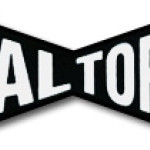- Industrie: Industrial valves
- Number of terms: 3113
- Number of blossaries: 0
- Company Profile:
Is the boiling or vaporizing of a liquid. See the definition of cavitation. When the vapor pressure downstream of a control valve is less than the upsteam vapor pressure, part of the liquid changes to a vapor and remains as a vapor unless the downstream pressure recovers significantly, in which case cavitation occurs. Flashing will normally cause a choked flow condition to occur. In addition the vapor bubbles can also cause mechanical damage to the valve and piping system.
Industry:Industrial valves
Is one in which the actuator stem extends with an increase in diaphragm pressure.
Industry:Industrial valves
Also supply pressure regulator. A device used to reduce plant air supply to valve POSITIONERS and other control equipment. Common reduced air supply pressures are 20 and 35 psig.
Industry:Industrial valves
A number used to describe the ratio between the pressure recovery after the vena contracta and the pressure drop at the vena contracta. It is a measure of the amount of pressure recovered between the vena contracta and the valve outlet. Some manufacturers use the therm K<sub>m</sub> to describe the pressure recovery factor. This number will be high (0. 9) for a globe style valve with a torturous follow path and lower (0. 8 to 0. 6) for a rotary style valve with a streamlined flow path. On most rotary products the F<sub>1</sub> factor will vary with the degree of opening of the valve closure member. Note! F<sub>1</sub> does not equal K<sub>m</sub>.
Industry:Industrial valves
Is a term used to describe the early stages of cavitation. At this point the bubbles are small, and the noise is more of a hiss, like the sound of frying bacon. There is normally no mechanical damage associated with incipient cavitation although it could have an effect on the corrosive properties of some fluids.
Industry:Industrial valves
For a diaphragm actuator, the effective area is that part of the diaphragm area that is effective in producing a stem force. Usually the effective area will change as the valve is stroked – being at a maximum at the start and at a minimum at the end of the travel range. Flat sheet diaphragms are most affected by this; while molded diaphragms will improve the actuator performance, and a rolling diaphragm will provide a constant stem force throughout the entire stroke of the valve.
Industry:Industrial valves
Is a fluid (usually pneumatic) pressure-operated, spring-opposed diaphragm assembly which positions the valve stem in response to an input signal.
Industry:Industrial valves
Includes all the parts that are in flowing contact with the process fluid except the body, bonnet, and body flanges and gaskets. The plug, seats, stem, guides, bushings, and cage are some of the parts included in the term trim.
Industry:Industrial valves
